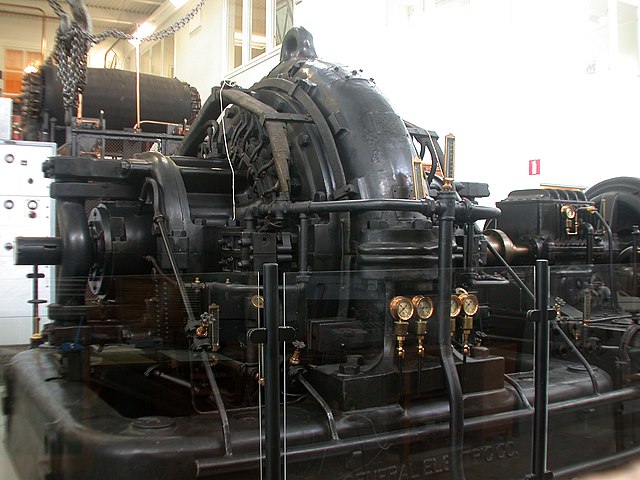An Alexanderson alternator is a rotating machine invented by Ernst Alexanderson in 1904 for the generation of high-frequency alternating current for use as a radio transmitter. It was one of the first devices capable of generating the continuous radio waves needed for transmission of amplitude modulated signals by radio. It was used from about 1910 in a few "superpower" longwave radiotelegraphy stations to transmit transoceanic message traffic by Morse code to similar stations all over the world.
200 kW Alexanderson alternator preserved at the Grimeton radiotelegraphy station, Sweden, the only remaining example of an Alexanderson transmitter.
Alexanderson 200-kW motor-alternator set installed at the US Navy's New Brunswick, NJ station, 1920.
Rotor of 200 kW alternator
Closeup of above rotor. It has 300 narrow slots cut through the rotor. The "teeth" between the slots are the magnetic poles of the machine.
An alternator is an electrical generator that converts mechanical energy to electrical energy in the form of alternating current. For reasons of cost and simplicity, most alternators use a rotating magnetic field with a stationary armature. Occasionally, a linear alternator or a rotating armature with a stationary magnetic field is used. In principle, any AC electrical generator can be called an alternator, but usually the term refers to small rotating machines driven by automotive and other internal combustion engines.
Alternators made in 1909 by Ganz Works in the power generating hall of a Russian hydroelectric station (photograph by Prokudin-Gorsky, 1911).
Alternator mounted on an automobile engine with a serpentine belt pulley (belt not present.)






